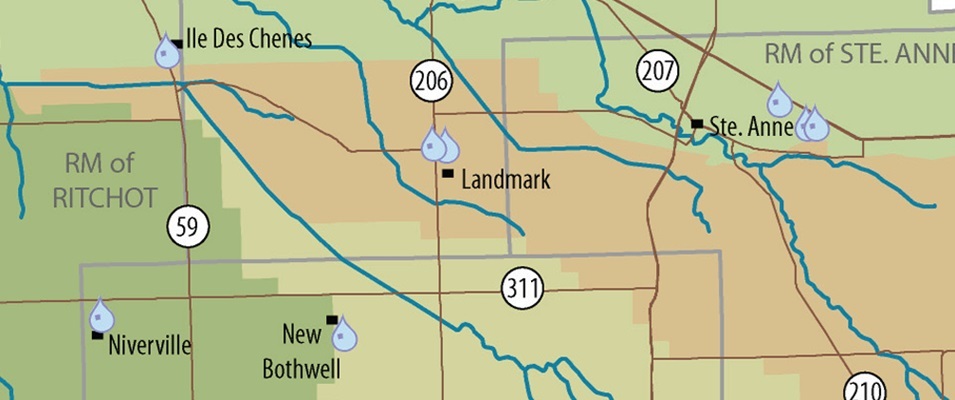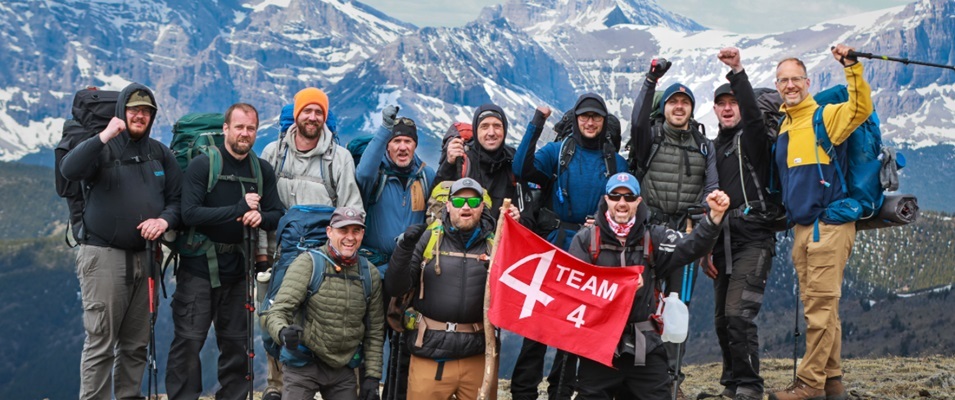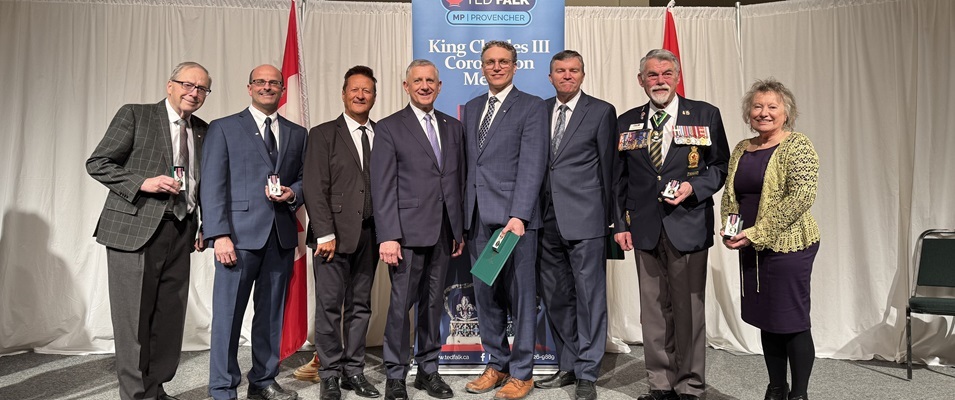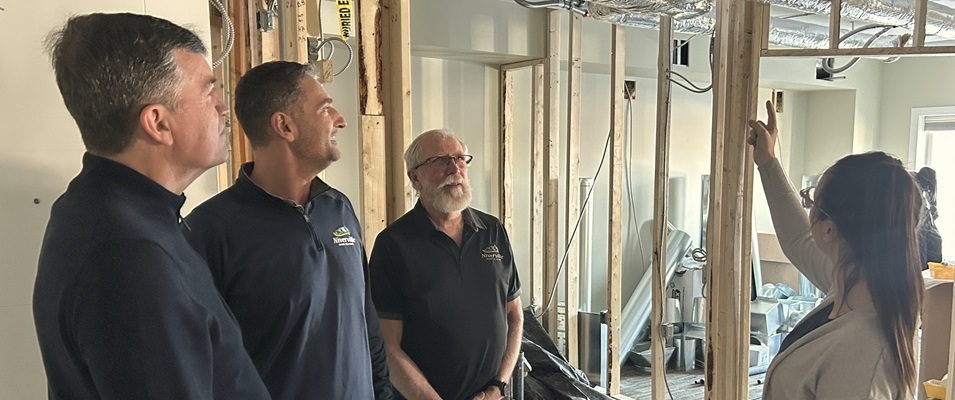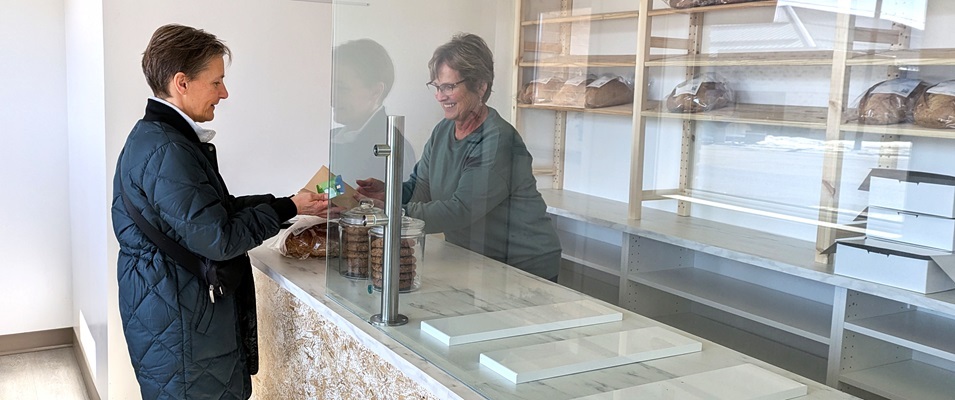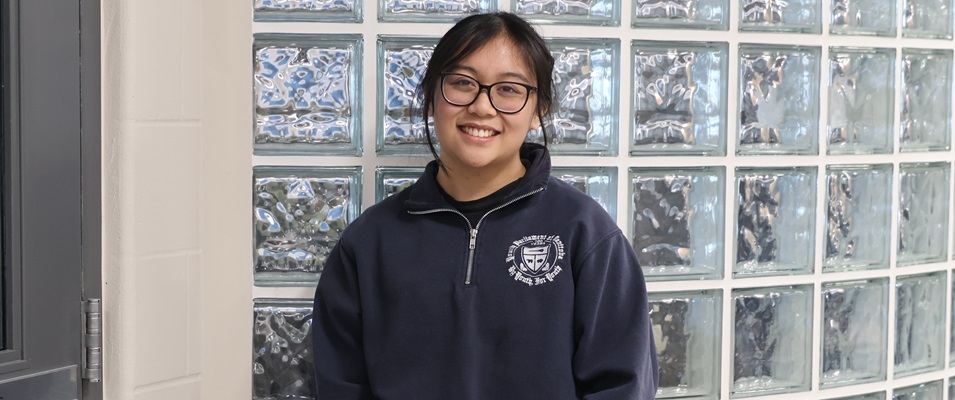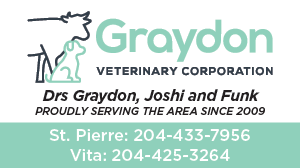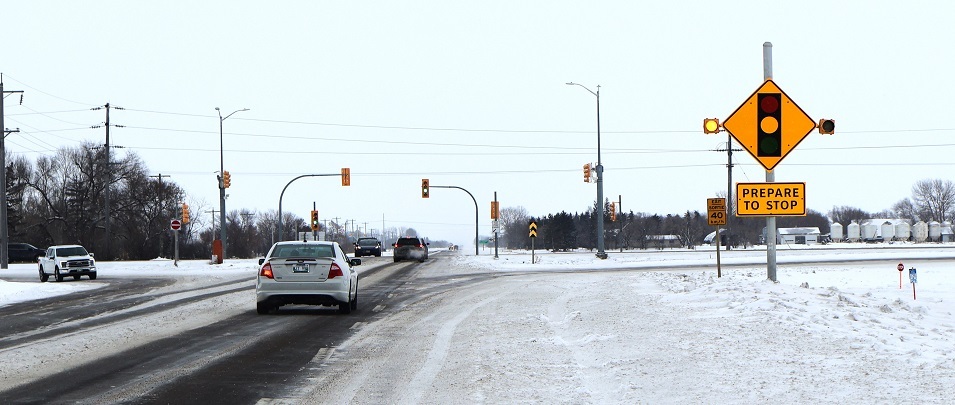
Morning commuters travelling through the intersection of Highways 311 and 59 are noticing a big improvement in their commute lately thanks to a new left turn signal that was quietly added on December 28.
The new turn signal, installed by Manitoba Transportation and Infrastructure (MTI), affects eastbound traffic waiting to make a north turn toward Winnipeg.
This signal is only operational, though, between the hours of 7:00 a.m. and 9:00 a.m., the peak time for daily commuter traffic as determined by MTI and local officials.
Jim Ingelbeen has been travelling this route on a daily basis since long before traffic lights existed here. Adding the lights, he says, was already a major improvement but the new left turn signal has provided one more layer of safety.
“In regard to early morning traffic, I would say at least 75 percent of the cars [at that intersection] are turning north,” Ingelbeen says. “There’s not very many cars that are waiting to go straight. Now you have a chance to make a [safe] turn instead of five cars trying to beat the yellow. I would say at least 50 percent more cars move through with each light.”
Another Niverville commuter has been passing through this intersection on their eastbound journey for the better part of 30 years. Commuter A chooses to remain anonymous but says that, even though she’s not making a left turn at the intersection, the signal has led to an improvement to traffic flow.
Before the signal was added, she says, it wasn’t at all uncommon for drivers to run the red light instead of waiting for the next opportune green light.
The addition of this turn signal means that three directions of traffic are now able to make protected turns. Northbound and southbound Highway 59 traffic have had left turn signals with dedicated turning lanes since the traffic lights were first installed.
Westbound traffic, on the other hand, still has no turn signals and so good judgment is the only thing protecting drivers as they make left or right turns onto Highway 59.
Commuter A says that there’s often a long line-up of westbound cars waiting at the light at the end of the workday. Unless the province adds a turn signal here as well, she says it’s just a matter of time before a fatality occurs.
She adds that while the new left turn signal provides a marked improvement to traffic flow and driver safety, it’s only somewhat better than it was before as long as dedicated turn lanes aren’t added for eastbound and westbound travellers.
Commuter A says that she’s witnessed occasions when impatient drivers illegally pass stopped vehicles on the right shoulder in order to take advantage of the green light.
Sensored Traffic Lights Also Improve Flow
Niverville resident Gerry Trapp says that there’s one more thing that affects the efficiency of traffic flow at intersections, something which too many drivers don’t understand.
It’s the traffic light sensors that are built right into the pavement at almost every rural light-controlled intersection, including the one at Highways 59 and 311.
The sensor’s job is to detect a vehicle as it comes to a halt at the stop line of an intersection, signalling to the traffic control system that a vehicle is waiting.
“It’s a diamond shape cut into the [pavement],” says Trapp. “They make it a diamond shape so that it will catch a wheel or both wheels. It’s probably about six feet wide by six feet in length.”
For 26 years, Trapp worked as a bus driver with Winnipeg’s public transit system and he says he has witnessed a lot of driver naïveté in his day.
On many such occasions, this has meant getting stuck behind a vehicle that came to a stop well in advance of where the sensor was able to detect it. When this happens, the light won’t change to accommodate the growing number of vehicles piling up behind the unwitting driver at the front.
“I’ve had to get out of my bus and go up to somebody’s window and say, ‘If you don’t move up another three feet, we’re going to sit here for another ten minutes,’” says Trapp.
Most commonly, he adds, these sensors are placed at the stop lines of highways where the traffic flow is lighter.
In the case of Highway 59, the traffic light for northbound and southbound commuters will stay green until a sensor detects waiting traffic in the eastbound and westbound lanes of Highway 311. So it’s important for the first driver that comes to a stop at the lights on Highway 311 to make sure that they pull right up to the stop line.
The same is true for the intersection where Highway 200 crosses the Perimeter Highway. Here, Trapp says, there are at least two sensors for each direction of northbound and southbound traffic: one in the forward lane and another in the turning lane.
If you’ve ever sat and watched the light cycle through numerous times while you waited for your turn, it’s likely because the person at the head of the lane you’re occupying isn’t stopped in the correct spot.
To make things more confusing for drivers at the Highway 200 intersection, the two turning lanes and one forward lane have graduated stop lines, each in a different location. If you’re in the straightaway lane but stop next to the driver waiting to make a left turn, they may get their green light while you sit and wait indefinitely for yours.





